Current evidence suggests that the entire suite of Phlaeothripinae on Australian Acacia species comprises a single lineage that has radiated subsequent to a single invasion of the genus Acacia. [Morris DC, Schwarz MP, Cooper SJB & Mound LA, 2002. Phylogenetics of Australian Acacia thrips: the evolution of behaviour and ecology. Molecular Phylogenetics and Evolution 25: 278-292], [Crespi BJ, Morris DC & Mound LA, 2004. Evolution of ecological and behavioural diversity: Australian Acacia thrips as model organisms. Australian Biological Resources Study & Australian National Insect Collection, CSIRO, Canberra, Australia. 328pp].
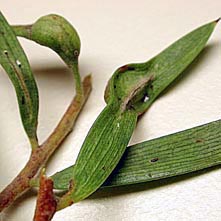
Acacia oswaldi galls
The radiation appears to have been driven primarily by competition for small enclosed spaces that provide protection from insolation and dehydration in the extremely arid environment of central Australia, but also by the need for protection from the many and abundant ant species [Crespi BJ & Mound LA, 1997. Ecology and evolution of social behaviour among Australian gall thrips and their allies. pp. 166-180. In Choe, J. & Crespi, BJ (eds) Evolution of Social Behaviour in Insects and Arachnids. Cambridge University Press.]
More than 25 species of Phlaeothripinae on Acacia are known to induce galls. In some of these gall-inducing thrips the first generation produced by the winged gall-foundress is small and the adults develop as wingless 'soldiers' [Kranz BD, Schwarz MP, Wills TE, Chapman TW, Morris DC & Crespi BJ. 2001. A fully reproductive fighting morph in a soldier clade of gall-inducing thrips. Behavioural Ecology and Sociobiology 50:151-161].
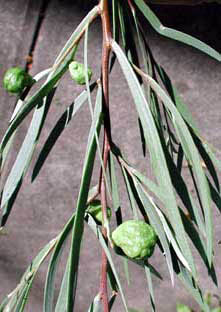
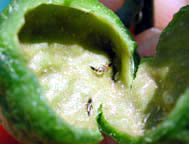
Acacia pendula galls
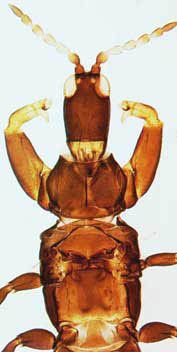
Winged foundress of Oncothrips morrisi
Kleptoparasitic thrips of the genus Koptothrips invade the galls of many Kladothrips species.
These invading thrips kill the original gall thrips by stabbing with their fore tarsal teeth, and then breed for one or more generations in the galls that they have usurped, sometimes producing large populations. Although kleptoparasites, these thrips are phytophagous not predatory.
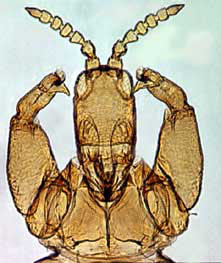
Wingless female soldier of Oncothrips morrisi
Two further suites of phlaeothripines on Acacia are the domicile creating species and the opportunist species.
[Crespi BJ, Morris DC & Mound LA, 2004. Evolution of ecological and behavioural diversity: Australian Acacia thrips as model organisms. Australian Biological Resources Study & Australian National Insect Collection, CSIRO, Canberra, Australia. 328pp].
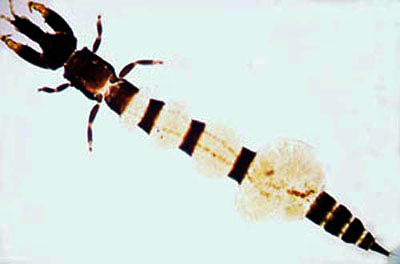
Physogastric foundress of Kladothrips torus
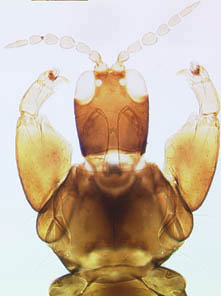
Koptothrips xenus